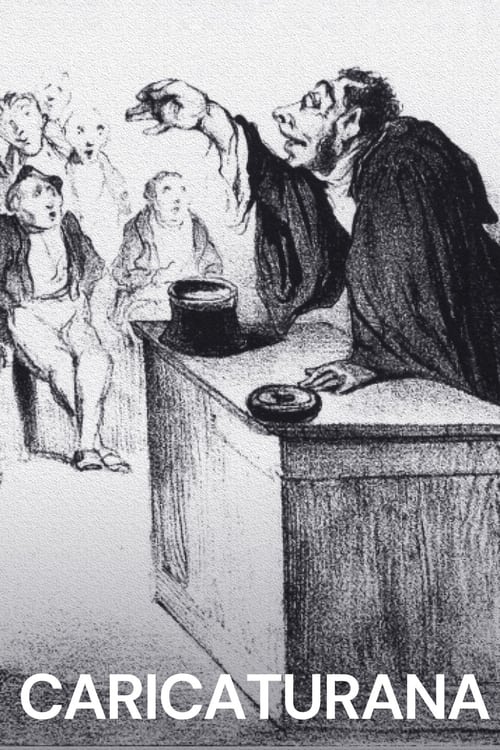
Ask Your Own Question
What is the plot?
The film opens with the year 1905 looming large, evoking the tense atmosphere aboard the Russian battleship Potemkin. The sailors, burdened by harsh conditions and imperial oppression, ignite a mutiny against their officers--a gesture of defiance that reverberates far beyond the ship itself. Though the film does not dramatize the mutiny in a traditional narrative style, the historical weight of this moment is palpable, evoking both the courage and desperation of the sailors. The Potemkin, a symbol of rebellion, becomes a floating microcosm of political upheaval and resistance.
The scene shifts seamlessly from this historical moment to a contemporary setting, where a sculptor, whose name remains undisclosed, immerses himself in the legacy of the Potemkin mutiny. His workspace is cluttered with sculpting tools and fragments of history--photographs, documents, and cinematic stills. The sculptor's mission is clear: to unravel the layers of myth and fiction woven into Sergei Eisenstein's iconic 1925 film, Battleship Potemkin. He scrutinizes the celebrated film, dissecting its dramatizations and embellishments, aiming to reveal the truth behind the legend.
As the sculptor works, his reflections unfold in a tone that blends dry humor with sharp critique. He muses on how history is often reshaped by those who tell it, how myths can overshadow facts, and how political narratives manipulate memory. This meta-commentary is underscored by his interactions with his own art--each sculpture a physical manifestation of historical distortion or revelation. The film uses these moments to highlight the tension between fact and fiction, past and present.
The narrative threads of 1905 and the present intertwine through the sculptor's investigation. He uncovers that after the mutiny, the sailors of the Potemkin were granted political asylum in Romania, a bold act that directly challenged the Russian Empire. This asylum is not just a footnote but a pivotal political statement, underscoring the international ramifications of the mutiny. The sculptor's discovery reframes the story from a mere shipboard rebellion to a broader geopolitical defiance.
Throughout the film, no explicit deaths or violent confrontations are depicted. The historical mutiny's violence is acknowledged but remains offscreen, filtered through the sculptor's analytical gaze. The focus is on intellectual confrontation--the clash between historical truth and cinematic myth. The sculptor's journey is one of uncovering hidden realities rather than engaging in physical battles.
In a particularly revealing moment, the sculptor addresses the camera directly, challenging the audience's assumptions: "What if the story we believe is just a story? What if history itself is a sculpture, shaped and reshaped by those who wield the chisel?" This line encapsulates the film's core theme, inviting viewers to question the narratives they accept.
As the film approaches its climax, the sculptor pieces together the discrepancies between Eisenstein's film and the historical record. He highlights how Eisenstein's work, while revolutionary in cinematic technique and political messaging, took liberties that have since ossified into accepted history. The sculptor's final reflections are both comedic and sobering, underscoring the absurdity and tragedy of historical misunderstanding.
The closing scenes return to the sculptor's studio, where he stands before a nearly finished sculpture--a distorted battleship, part monument, part caricature. His voiceover muses on the nature of memory and myth: "In the end, perhaps the Potemkinists are not just the sailors, but all of us, wrestling with the past, trying to make sense of what we inherit."
The film ends without dramatic confrontation or death, instead offering a contemplative pause. The sculptor's work remains unfinished, symbolizing history's perpetual incompleteness and the ongoing struggle to discern truth from legend. The audience is left to ponder the mutable nature of history and the power of storytelling.
In sum, The Potemkinists (2022) is a layered, reflective short film that bridges 1905 and the present through the lens of a sculptor's inquiry. It reveals the political asylum granted to the mutineers in Romania as a significant historical act, critiques Eisenstein's mythologizing of the mutiny, and ultimately challenges viewers to reconsider how history is constructed, remembered, and represented. No characters die within the film's narrative frame; instead, the deaths and violence of 1905 remain historical shadows. The film closes on an intellectual and emotional note, emphasizing the complexity of historical truth and the enduring impact of myth.
What is the ending?
In the ending of "The Potemkinists," the main characters confront the consequences of their actions during the revolution. The film culminates in a tense standoff between the revolutionaries and the government forces. Ultimately, the revolution fails, leading to the arrest of key characters. The protagonist, Alexei, is captured but finds a moment of hope in the solidarity of his fellow revolutionaries. The film closes with a haunting image of the Potemkin ship sailing away, symbolizing lost dreams and the enduring spirit of rebellion.
As the final act of "The Potemkinists" unfolds, the atmosphere is thick with tension. The scene opens in a dimly lit warehouse where the revolutionaries have gathered for one last meeting. Alexei, the protagonist, stands at the forefront, his face etched with determination and fear. He addresses his comrades, urging them to remain steadfast despite the overwhelming odds against them. The flickering light casts shadows on their faces, revealing a mix of hope and despair.
Suddenly, the sound of marching boots echoes from outside, signaling the approach of government forces. The revolutionaries exchange anxious glances, their hearts racing. Alexei's internal struggle is palpable; he knows that this could be their last stand. He rallies his comrades, reminding them of the sacrifices they have made and the ideals they fight for. The camera captures the intensity in his eyes, reflecting his unwavering belief in their cause.
As the door bursts open, the government soldiers storm in, guns drawn. A chaotic confrontation ensues. The revolutionaries fight bravely, but they are outnumbered. The scene is frenetic, with gunfire ringing out and the sound of bodies hitting the ground. Alexei fights valiantly, but he is eventually overpowered and captured. The camera lingers on his face, a mixture of defiance and resignation as he is led away in handcuffs.
Meanwhile, we see the fates of other key characters. Maria, a fierce revolutionary and Alexei's love interest, is also captured. Her spirit remains unbroken, and she defiantly shouts words of encouragement to her fellow fighters as she is taken away. The audience can feel her strength, even in defeat. Another character, Dmitri, who had been wavering in his commitment to the cause, is seen hiding in the shadows, torn between his loyalty to his friends and his fear of the consequences. Ultimately, he chooses to flee, leaving behind the revolution and his comrades.
The final scene shifts to the Potemkin ship, now a symbol of their struggle. It sails away from the harbor, the sun setting in the background, casting a golden hue over the water. The image is both beautiful and tragic, representing the dreams of the revolutionaries slipping away. As the ship disappears into the horizon, the film closes with a lingering sense of loss and the enduring spirit of rebellion, leaving the audience to reflect on the sacrifices made and the hope that remains for future generations.
In this poignant conclusion, the film encapsulates the themes of struggle, sacrifice, and the unyielding desire for freedom, even in the face of overwhelming adversity. Each character's fate serves as a reminder of the personal costs of revolution and the complexities of loyalty and courage.
Is there a post-credit scene?
In "The Potemkinists," there is indeed a post-credit scene that adds a layer of depth to the film's themes. As the credits roll, the screen fades to black before transitioning to a dimly lit room filled with old film reels and photographs. The camera slowly pans across the cluttered space, revealing remnants of the past, including a dusty projector and a faded poster of the original "Battleship Potemkin."
Suddenly, a figure enters the room--it's one of the film's main characters, Elena, who has been on a journey of self-discovery throughout the film. She appears older, her face lined with the wisdom of her experiences. As she approaches the projector, she picks up a reel and holds it in her hands, contemplating its significance.
Elena's internal monologue begins, reflecting on the power of storytelling and the impact of history on the present. She speaks softly, her voice filled with a mix of nostalgia and determination, expressing her desire to ensure that the stories of the past are not forgotten. The scene captures her emotional state, revealing a sense of responsibility to honor those who fought for change and to inspire future generations.
As she threads the film reel into the projector, the screen flickers to life, showing brief, haunting images from the original film interspersed with scenes from her own life, symbolizing the connection between past and present. The final shot lingers on her face, illuminated by the glow of the projector, as a single tear rolls down her cheek, embodying both sorrow and hope.
The scene concludes with the sound of the projector whirring, leaving the audience with a poignant reminder of the enduring power of cinema and the stories that shape our understanding of history.
What motivates the main character, Ivan, to join the Potemkinists?
Ivan, a disillusioned sailor, is driven by a deep sense of injustice and a desire for freedom. His experiences aboard the ship, witnessing the brutal treatment of his fellow sailors, ignite a passion for rebellion. The oppressive environment and the camaraderie he feels with his peers push him to take a stand against authority.
How does the character of Captain Petrov evolve throughout the film?
Captain Petrov begins as a strict and authoritarian figure, embodying the oppressive naval hierarchy. As the story progresses, he faces the consequences of his actions and the uprising of the sailors. His internal conflict grows as he grapples with his loyalty to the Navy versus his growing understanding of the sailors' plight, leading to a pivotal moment of reckoning.
What role does the character of Maria play in the sailors' rebellion?
Maria serves as a symbol of hope and resilience for the sailors. She is a passionate advocate for their rights and becomes a key figure in rallying the crew. Her emotional strength and unwavering belief in justice inspire Ivan and others to join the rebellion, making her an essential catalyst for the uprising.
What is the significance of the ship's mutiny scene?
The mutiny scene is a turning point in the film, visually depicted with intense close-ups of the sailors' faces, capturing their fear and determination. The chaos of the uprising is underscored by a powerful score, heightening the emotional stakes. This moment signifies the breaking point of oppression and the birth of collective action among the sailors.
How does the film portray the relationship between Ivan and Captain Petrov?
The relationship between Ivan and Captain Petrov is complex, marked by tension and conflict. Initially, Ivan sees Petrov as a figure of authority to be respected, but as the story unfolds, their dynamic shifts. Ivan's growing defiance and Petrov's struggle to maintain control create a charged atmosphere, culminating in a confrontation that reveals their contrasting ideologies.
Is this family friendly?
"The Potemkinists," produced in 2022, is a film that explores complex themes and historical events, which may not be suitable for all audiences, particularly children or sensitive viewers.
-
Violence and Conflict: The film depicts scenes of unrest and rebellion, including confrontations that may involve physical violence. These moments are intense and can be distressing.
-
Emotional Turmoil: Characters experience significant emotional struggles, including loss, betrayal, and despair. These themes may be heavy for younger viewers.
-
Historical Context: The film addresses serious historical events, including oppression and social injustice, which may be difficult for children to fully understand or process.
-
Mature Themes: There are discussions and portrayals of political ideologies and the impact of war on society, which may be complex and unsettling for sensitive audiences.
-
Tragic Outcomes: The narrative includes moments of tragedy that could evoke strong emotional reactions, particularly in scenes involving the loss of life or loved ones.
Overall, while the film is rich in storytelling and character development, its themes and content may not be appropriate for younger viewers or those who are sensitive to such topics.






















